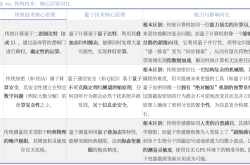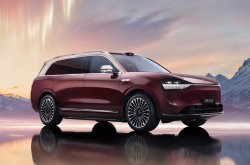Li Auto: 'Breaking Before Building'
![]() 11/28 2025
11/28 2025
![]() 434
434
Introduction
Li Xiang Takes a Leap of Faith, Betting on a More Imaginative Future with the Resolve of a Second-Time Entrepreneur
When Li Auto unveiled its 2025 third-quarter financial report, the initial numbers seemed far from encouraging.
Delivery volumes, revenue, profits, and cash flow—multiple key indicators took a hit, with the company even reporting a rare quarterly net loss in recent memory.
However, focusing solely on these financial figures is akin to only noticing the autumn wind's yellow leaves falling from a tree, while overlooking its deep-rooted foundation in the soil, poised for new growth.
At this juncture, what's needed more is a vision that cuts through the fog, rather than mere optimism or pessimism; a mindset that transcends short-term fluctuations and points towards a distant horizon.
Re-examining Li Auto's performance press conference, the management didn't shy away from the current challenges. Instead, they openly analyzed the underlying causes and outlined a grander, albeit more arduous, vision for the future.
Short-Term Pain: Facing Reality Head-On and Taking Proactive, Drastic Measures
First and foremost, Li Auto must confront the present difficulties.
Third-quarter deliveries stood at 93,211 units, a year-on-year decline of approximately 39%; total revenue also dropped to 27.4 billion yuan, a 36.2% decrease from the previous year. These two sets of operational data clearly reflect the intensity of market competition and the company's transitional phase amid product switches. The newly launched all-electric i-series is still ramping up production, while the existing L-series extended-range models face pressure from diminishing market freshness.
What impacted profits even more directly was the proactive recall of the 2024 MEGA models. The company recognized a one-time warranty cost provision of roughly 1.1 billion yuan, leading to a significant decline in gross profit margin and a quarterly loss.
Yet, the perspective we adopt in viewing this situation is crucial. Is this a passive crisis or a proactive responsibility?
The management opted for the latter—prioritizing customer rights by allocating most battery resources for recalled vehicle replacements, even if it temporarily affected new model deliveries.
This approach, which puts 'long-term reputation' ahead of 'short-term interests', albeit making the financial report look bleak for the moment, underscores the company's commitment to its brand foundation. Excluding this one-time impact, Li Auto's gross profit margin remained healthy at 20.4%, indicating that its core business's 'hematopoietic capacity' and pricing advantage remain intact.
Similarly, the net outflow of operating cash flow was primarily due to slower payment collection (accounts receivable) caused by decreased deliveries and inventory stockpiling for future production. At this juncture, the impressive cash reserve of 98.9 billion yuan on hand became Li Auto's greatest confidence in 'trading time for space'. It enables the company to make firm long-term investments for the future, even amid an industry downturn.
The good news is that the all-electric model lineup (Li Auto i6 and Li Auto i8) has shown strong momentum, particularly with a significant market penetration increase in core new energy markets like Beijing, Shanghai, Guangzhou, and Shenzhen, injecting fresh impetus into the company's future growth.
The Li Auto L-series will also undergo major facelifts next year. Ma Donghui, President of Li Auto, revealed at the meeting that 'the facelifted L-series models are generational iterative products built on user feedback and core technological accumulations.' At that time, the Li Auto L-series will aim to fulfill the overall strategic goal of 'Li Auto regaining its leading position in extended-range products by 2026'.
Strategic Ascension: Li Auto's Blueprint for the New Decade
If the financial report data represents 'breaking', then the core of Li Xiang's sharing at the conference call's outset is 'building'. He candidly reviewed the profound reflections and key choices the company made regarding organization, products, and technology for the second decade.
CEO Li Xiang shared an intriguing reflection: Over the past three years, they attempted to fit into the 'professional managers' management system, believing it to be a sign of maturity for a large company. However, they discovered that this system is most efficient when the industry is stable and the pattern is set, but struggles to cope with the current battlefield of intelligent electric vehicles, where technology is advancing rapidly and the pattern is evolving swiftly.
He bluntly stated that this made them 'a worse version of themselves'.
Thus, Li Xiang decided to revert to the 'startup' model he excels at—emphasizing in-depth dialogue over layer-by-layer reporting, focusing on user value rather than merely completing tasks, and continuously improving efficiency rather than occupying more resources. This choice, in essence, is an extreme pursuit of innovation speed and decision-making efficiency, a complete abandonment of large company ailments, requiring immense courage and a profound spirit of self-criticism.
In other words, in terms of organizational direction, Li Xiang decided to revert to a startup approach.
So, where does Li Auto's focus lie at the product level next? This is also the most imaginative part of the entire strategy.
Li Xiang clearly outlined three paths: First, remaining at the electric vehicle level and getting caught up in the parameter competition of range, size, and price; second, becoming an intelligent terminal and falling into the awkward situation of using mobile phone applications in the car. He firmly chose the third and also the most challenging path: defining cars as 'embodied intelligent robots in the physical world'.
He borrowed classic IPs like Transformers and Knight Rider to vividly depict how future cars will evolve from passive tools to active partners with top-notch driving capabilities, not only capable of autonomous driving but also taking the initiative to welcome and provide care services.
This positioning elevates the product's competitive dimension from hardware comparison to a new height of providing 'automatic and proactive services', showcasing Li Auto's lofty ambition to break through the current red ocean of homogeneous competition.
A grand vision necessitates a solid technological foundation. Li Auto has gradually built up its core technological advantages: through full-stack self-research, it has constructed a complete ecosystem from chips (M100), operating systems (Xinghuan OS) to AI large models (VLA). These technological reserves instill Li Auto with full confidence in its next-generation products.
Of course, no matter how beautiful the blueprint is, it still needs to be realized step by step. The most urgent task for Li Auto at present is to resolve the supply chain bottleneck and enable the i-series all-electric models, which are well-received in the market, to quickly ramp up production. The company has announced the introduction of dual battery suppliers for the i6, and it is expected that the monthly production capacity will reach 20,000 units by early next year, a very practical and crucial step.
At the same time, the adjustment of the new energy vehicle purchase tax policy in 2026 will cause short-term market fluctuations. Li Auto has launched measures such as the 'Peace-of-Mind Car Purchase Plan' to strive for a smooth transition. More importantly, 2026 will be a pivotal year for Li Auto's products. The extended-range models of the L-series will undergo major facelifts, aiming to consolidate their basic market; while the new-generation AI system equipped with the M100 chip will start delivery, which is the first litmus test to see whether its 'embodied intelligence' strategy can bring about a qualitative change in user experience.
Li Auto's current turn has proactively chosen the most challenging path, but it may also pave the way for a blue ocean belonging to it. The road is destined to be bumpy, but its strategic clarity and firm determination undoubtedly warrant more patience and anticipation from the market.







